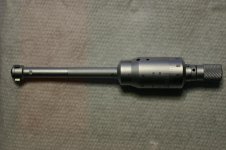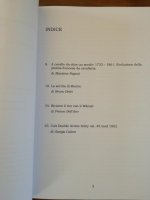Why a tapered case?
One might ask, "Why did they need to make a tapered case for a straight case chamber"?
The answer is simple. This was a dual purpose round that had to fit and function in "both chambers"...Because the chambers weren't even close to each other? The Arsenal was forced to manufacture a tapered case because if they didn't? The round would rattle around so much in the Colt that gross "miss-alignment" would be an obvious issue that would cause the firing pin to strike the primer off center. This would occur "OFTEN"...causing a miss-fire! That's really bad. Early primers weren't fans of off center strikes.
So, the solution is to taper the case at the base slightly larger to avoid the case "rattle" by closing the gap and introduce a hollow base bullet to take up the "slop" in the Colt barrel groove diameter.
This modified round would actually function well in the Schofield. It's the Colt that would suffer.
**** Makes me wonder if any of these sloppy rounds were at the Little Big Horn? I'd bet that accuracy with the modified 45 round at distances beyond 25 yards in the Colt Revolver would be horrible.
Murph
One might ask, "Why did they need to make a tapered case for a straight case chamber"?
The answer is simple. This was a dual purpose round that had to fit and function in "both chambers"...Because the chambers weren't even close to each other? The Arsenal was forced to manufacture a tapered case because if they didn't? The round would rattle around so much in the Colt that gross "miss-alignment" would be an obvious issue that would cause the firing pin to strike the primer off center. This would occur "OFTEN"...causing a miss-fire! That's really bad. Early primers weren't fans of off center strikes.
So, the solution is to taper the case at the base slightly larger to avoid the case "rattle" by closing the gap and introduce a hollow base bullet to take up the "slop" in the Colt barrel groove diameter.
This modified round would actually function well in the Schofield. It's the Colt that would suffer.
**** Makes me wonder if any of these sloppy rounds were at the Little Big Horn? I'd bet that accuracy with the modified 45 round at distances beyond 25 yards in the Colt Revolver would be horrible.
Murph
Last edited:







